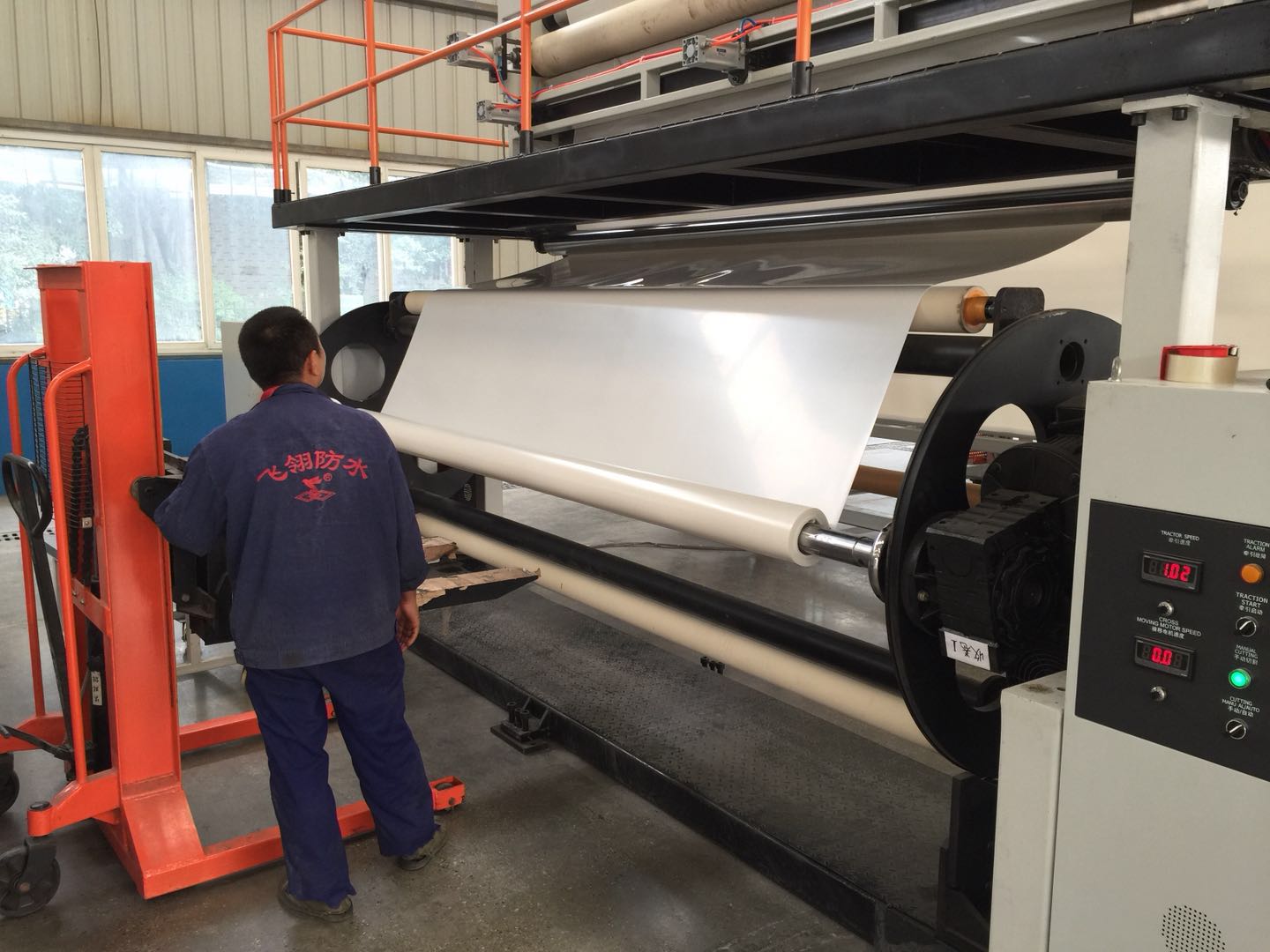Applicable: Roof waterproofing for industrial and civil buildings, covering various roofs, flat roofs, sloping roofs, underground waterproofing for buildings: covering waterproofing for reservoirs, embankments, water pools, tunnel grain depots, civil air defense projects, landfill sites, artificial lakes, etc.
1、 Composition of production line
The production line of PE waterproofing membrane/geomembrane equipment mainly consists of the following key parts:
Raw material processing system: responsible for mixing PE resin particles with other additives (such as antioxidants, anti UV agents, etc.) in proportion to prepare for the subsequent extrusion process.
Extruder: It is the core component of the production line, which extrudes uniformly mixed raw materials into continuous film like materials through high-temperature melting. The screw design, heating method, and temperature control of the extruder have a significant impact on the quality of the extruded film.
Cooling device: Quickly reduce the temperature of the extruded film to solidify and form it. Common cooling methods include air cooling, roller cooling, etc.
Stretching device: Stretching the cooled film material to improve its strength and toughness. Stretching can be done in both longitudinal and transverse directions to meet the needs of different application scenarios.
Cutting device: Cut the film material into standard rolls according to the set width and length. The cutting accuracy and speed have a direct impact on the quality and effectiveness of the coil material.
Roll up device: neatly roll up the cut rolls for subsequent packaging and transportation. The winding device should have stable tension and good winding effect.
2、 Working principle
The working principle of PE waterproofing membrane/geomembrane equipment production line is relatively complex, but it mainly includes the following steps:
Raw material mixing: PE resin particles are thoroughly mixed with various additives in a high-speed mixer to ensure the quality and performance of the extruded film.
Melt extrusion: The mixed raw materials are fed into an extruder, where they are heated and melted into a continuous film like material through the squeezing and shearing action of a screw.
Cooling solidification: The extruded film quickly passes through a cooling device, lowers the temperature, and solidifies into shape.
Stretching treatment: Stretching the cooled film material vertically and horizontally to improve its strength and toughness.
Cutting and winding: The film material is cut into standard rolls and neatly wound up.
3、 Characteristics of production line
High degree of automation: Modern PE waterproofing membrane/geomembrane equipment production lines usually adopt fully automatic control systems, which can monitor various parameters in real-time during the production process, ensuring stable and reliable product quality.
High production efficiency: The production line has a high production efficiency and can quickly produce a large amount of high-quality PE waterproofing membranes and geomembranes.
Energy saving and environmental protection: The production line adopts advanced energy-saving technologies and environmentally friendly materials, which can reduce energy consumption and environmental pollution.
Wide applicability: The production line can produce PE waterproof rolls and geomembranes with different specifications and properties to meet the needs of different application scenarios.
4、 Application Fields
PE waterproofing membrane/geomembrane is widely used in the following fields:
Water conservancy engineering: such as anti-seepage projects for reservoirs, dams, channels, etc.
Environmental protection engineering: such as pollution prevention projects for landfills, tailings storage sites, etc.
Construction projects: such as roof waterproofing, basement waterproofing, tunnel waterproofing, etc.
Transportation engineering: waterproofing engineering for infrastructure such as highways, railways, airports, etc.









